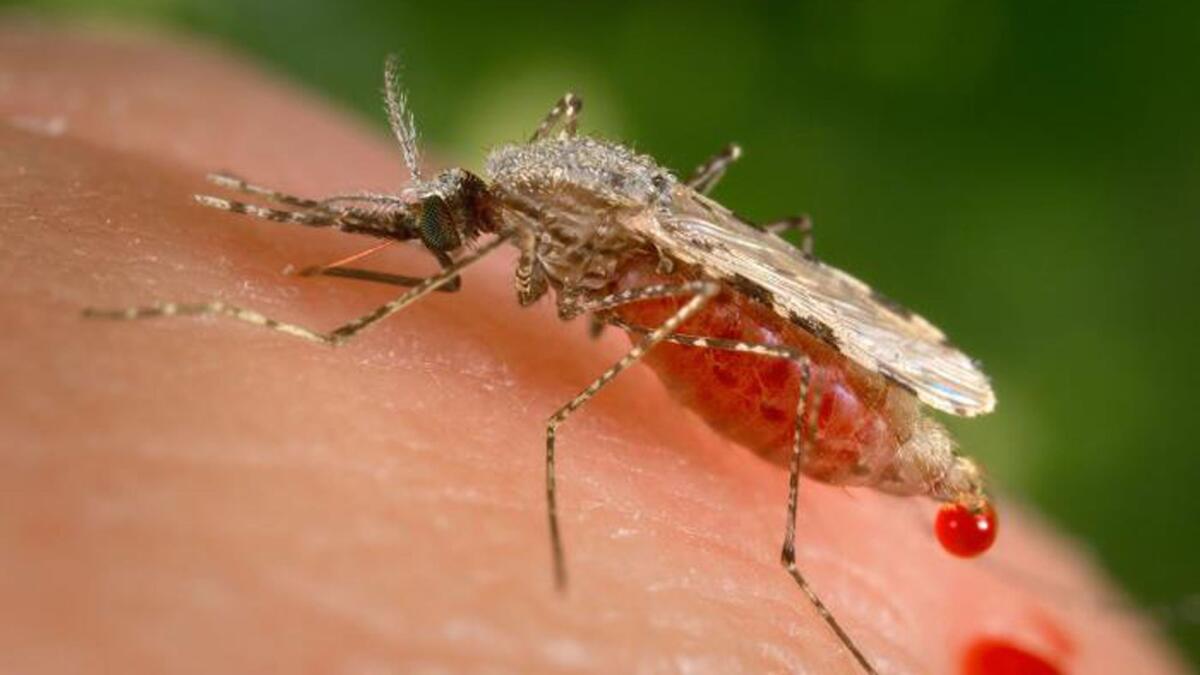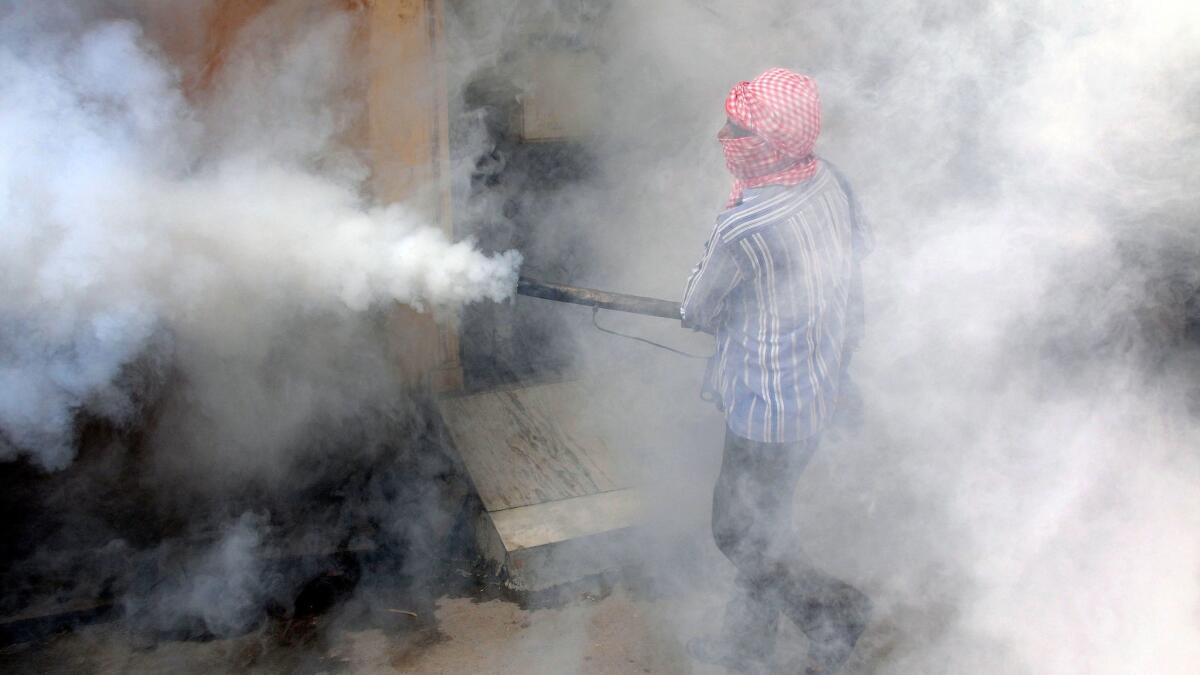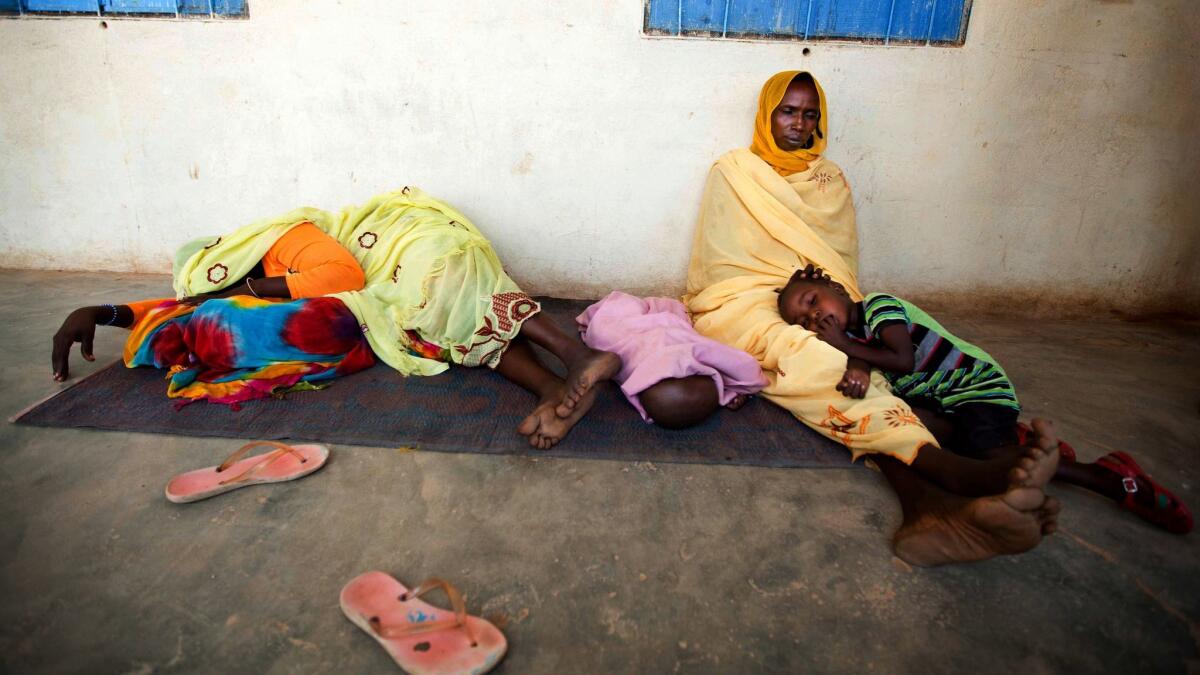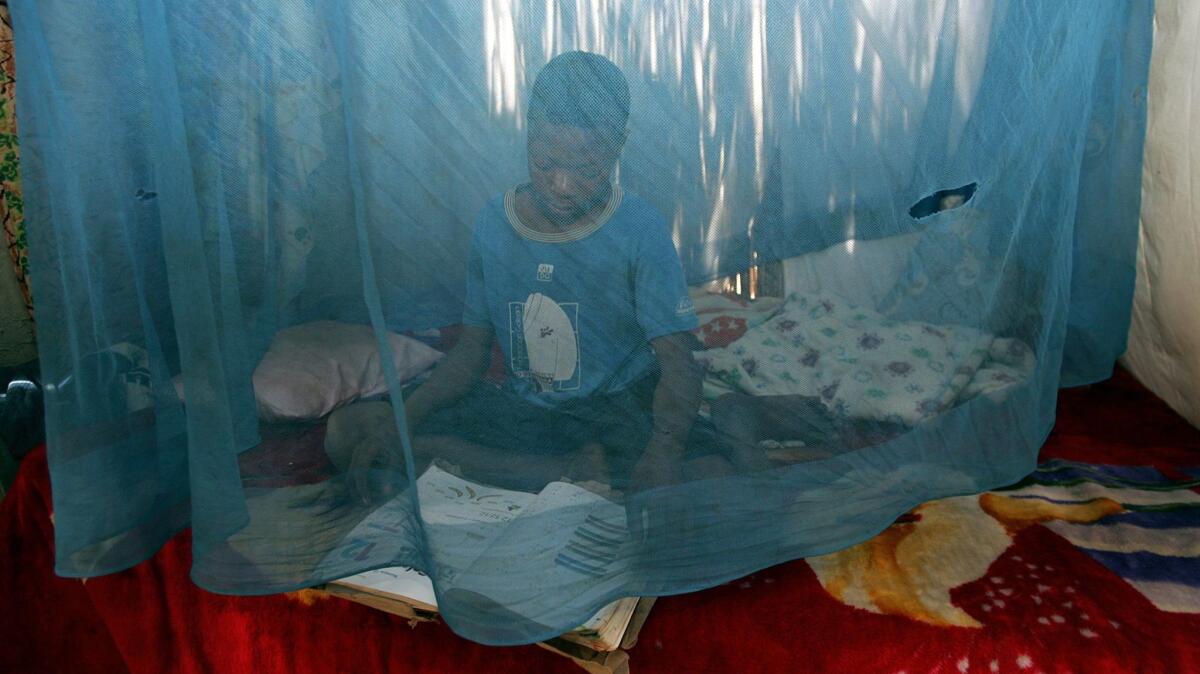The world is off track in its goal to eliminate malaria. Here’s why.

- Share via
Progress toward the global elimination of malaria has stalled, according to a report to be published Wednesday by the World Health Organization.
The world made big gains against malaria from 2000 to 2015, with annual infections falling 18% and annual deaths dropping 48%. The WHO was so encouraged by the declines that in 2015 it announced a goal of cutting malaria infections and deaths worldwide by at least 40% by 2020.
But in the last three years, many nations have reported significant increases in malaria cases, according to the new report.
“We are not seeing the progress that had been achieved in the past being sustained,” Pedro Alonso, director of the WHO’s Global Malaria Program, told reporters in a telephone briefing last week. “Reductions in disease and death have ceased, and we are therefore not on track to meet the 2020 target.”
Reasons for the slowdown differed across specific regions and countries, health officials said. But contributing factors included insufficient funding, a lack of interventions to prevent spread of the disease, risks posed by conflict in malaria endemic zones, irregular climate patterns, and the emergence of parasite resistance, the report said.
“It’s a bit of wake-up call for all of us who are working hard toward reducing and ultimately eliminating and even eradicating malaria and think we have to take it seriously,” said Larry Slutsker, who heads the Center for Malaria Control and Elimination at the Seattle-based global health nonprofit PATH.
Here are some key figures from the report:
216 million
The number of malaria cases worldwide in 2016. That’s down from 237 million in 2010, but about the same as it’s been the last few years.
With 194 million cases in 2016, Africa accounted for almost 90% of the total. Southeast Asia was a distant second with 14.6 million.

445,000
The estimated number of deaths from malaria last year, or more than 50 people every hour. More than 90% of those deaths are in Africa, and 80% of the victims in Africa are children younger than 5.
“It’s one of the top killers of African children,” Alonso said.
Nigeria had the highest percentage of malaria deaths.
Though Africa has made significant progress in reducing infections and death, Slutsker said, getting countries to prioritize anti-malaria efforts “is something we’re going to have to work more on in the African region.“
“As is the case with many health problems in Africa, there are systems issues,” he said. “ … In terms of building the systems to deliver treatment to people in a timely way, to make the diagnosis and to record those cases ... those are systems that need to be built.”
$2.7 billion
The amount of money that was invested last year in malaria control and elimination efforts globally by governments in countries where malaria is endemic and their international partners. The largest portion of the funding — around 74% — went to Africa. The United States was the largest donor, providing $1 billion, or 38%, of all malaria funding.
Annual funding has held steady since 2010. To meet the 40% reduction target, according to the report, yearly funding must reach $6.5 billion by 2020.
Alonso said the progress made in the fight against malaria over the last 10 to 15 years may have caused “a decreased sense of urgency and a certain degree of complacency,” which might account for the plateau in funding.
“Therefore with [the current] level of funding and the tools that we have, we are not going to see any further progress,” he said.

With spending of less than $2 a person in countries where malaria takes the heaviest toll, experts said committing more is not only the right thing to do for moral reasons but also for economic ones.
“Malaria is clearly one of the best humanitarian investments in the world today, creating $20 in economic benefits for every dollar that’s invested in malaria control,” said Martin Edlund, chief executive of the nonprofit Malaria No More. “We still see it as one of the best ways to save lives, to get kids back in school, to get people back to work and free up health system capacity to tackle other challenges. If we want to realize those benefits, we have to continue to invest and we have to continue to innovate.”
582 million
The number of mosquito nets treated with insecticides that were distributed around the world, according to manufacturers. Although 505 million of the nets went to countries in sub-Saharan Africa, the proportion of households in this region with sufficient nets remained inadequate, the report said .
“Bed nets have been perhaps the primary driver of the lives saved and the progress that we’ve seen over the last decade or so,” Edlund said. But he cautioned that “bed nets alone won’t solve the problem.”
Also key is stopping transmission of the disease by spraying insecticides indoors, diagnosing people efficiently and providing prompt and effective treatment, he said.

44
The number of countries with malaria transmission that reported fewer than 10,000 cases in 2016 — up from 37 in 2010. Kyrgyzstan and Sri Lanka were certified by the WHO as malaria-free in 2016, and with no cases reported that year Algeria appears to be on the verge of receiving that designation. A total of 21 countries have the potential to eliminate the disease within their borders by 2020, according to the agency.
“From our standpoint, this report presents a really clear choice,” Edlund said. “Either we do what’s needed to end the world’s oldest, deadliest disease, or we let malaria resurge at the potential cost of millions of lives and trillions of dollars in economic benefits.”
For the record, 10:38 p.m.: An earlier version of the report referred to the Program for Appropriate Technology in Health. The Seattle-based global health nonprofit no longer spells out its full name. It is known as PATH.
Sign up for Essential California
The most important California stories and recommendations in your inbox every morning.
You may occasionally receive promotional content from the Los Angeles Times.








